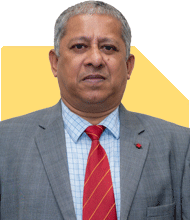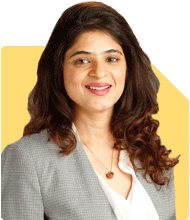
33 Year old single with almost 90 lacs savings, wants to retire at 45
Home loan pending 65 lacs
Mutual funds- invested amount is 9 lacs, current value is 15.75 lacs with an xirr of 23 percent. I have achieved this by starting SIP in 2016 with a minimum of 500 Rs per month to currently 36k per month. I will continue this SIP till 50 Years
Stocks - invested amount is 14.5 Lacs current value is 23 Lacs
FD - 39 lacs with 7.2 percent of interest. I know it’s a foolish idea to save the money in FD but returns are good and once it’s matured I will invest the same in Mutual funds and enable the SWP after 2 years. Till than it will grow at minimum of 10 percent. The reason of keeping the FD is because I have two separate loans I am managing the emi using the interest received on quarterly baisis for one loan.
PPF - 9 lacs I am big fan of compounding but since last 2 years I am unable to add funds here because I know I can earn more than 7.2 percent what they offer if I invest in stocks.
Based on above information please advise
Ans: Your goal of retiring at 45 is achievable with proper planning. You’ve already built a strong foundation with disciplined savings and investments. Let's explore each component of your financial strategy and offer recommendations to refine your approach for a more secure financial future.
Analysing Your Current Financial Situation
You’ve done well so far in managing and growing your investments. Here's an overview of where you stand now:
Mutual Funds: Invested Rs 9 lakhs, current value Rs 15.75 lakhs, with an XIRR of 23%.
Stocks: Invested Rs 14.5 lakhs, current value Rs 23 lakhs.
Fixed Deposits (FDs): Rs 39 lakhs earning 7.2% interest.
PPF: Rs 9 lakhs invested, though no new additions in the last two years.
Home Loan: Pending loan of Rs 65 lakhs.
Let's evaluate and strategize based on each of these.
Mutual Funds: A Strong Performer
Your mutual funds have done quite well, with an impressive XIRR of 23%. Your plan to continue SIPs till 50 is a good approach, as mid-to-long-term SIPs help smooth out market volatility. A few key points to consider:
Review Fund Performance Regularly: Since you’ve been investing since 2016, it’s important to review your funds every year. Make sure they continue to perform well in comparison to peers and benchmarks. If any fund underperforms for two years, consider switching to a better fund.
Continue SIPs: Your current Rs 36,000 monthly SIP is a significant amount. Continue this or even increase it as your income grows. Mid to long-term SIPs are beneficial in wealth creation.
Avoid Direct Funds: While direct funds have lower expense ratios, they require constant monitoring and evaluation. Regular funds, managed through a certified financial planner (CFP), offer professional management and help you make better decisions over time.
Enable Systematic Withdrawal Plan (SWP): You plan to start SWP after two years. This is a great idea for creating a regular income stream in retirement. SWPs are tax-efficient and provide steady cash flow, which will help in managing expenses.
Stock Portfolio: Continue but Be Cautious
Your stock portfolio has grown from Rs 14.5 lakhs to Rs 23 lakhs, which is commendable. Stock investments are high-risk, high-reward, so a balanced approach is important as you near retirement.
Diversification: Ensure your stock portfolio is well-diversified across sectors to mitigate risk. Concentration in a single sector or stock can lead to significant losses during market downturns.
Review and Rebalance: As you approach your retirement goal, gradually shift some of your equity exposure to safer assets like debt mutual funds or balanced funds. This will reduce volatility in your portfolio and protect your capital.
Avoid Heavy Reliance on Stocks: While stocks offer high growth potential, they are also the most volatile. As you approach retirement, reduce your reliance on direct equity investments. Focus on more stable instruments that offer regular returns.
Fixed Deposits: A Safe Cushion, but Think Long Term
While FDs are often considered low-return instruments, they provide safety and stability, which is valuable when managing loan EMIs.
Continue Using Interest for EMI Payments: You are currently using the FD interest to manage one loan EMI. This is a practical approach to maintaining liquidity.
FD Maturity Plan: You mentioned you plan to reinvest FD maturity amounts into mutual funds after two years. This is a good strategy, but keep in mind to stagger your investments through SIPs or STPs rather than lump sum investments to reduce market risk.
Don't Dismiss FDs Entirely: It’s wise to keep a portion of your portfolio in fixed-income instruments like FDs, especially closer to retirement. This ensures stability and a guaranteed return. You can aim to keep around 20-30% of your portfolio in safer instruments like FDs and debt mutual funds.
Public Provident Fund (PPF): Continue to Leverage Compounding
Your Rs 9 lakh in PPF is a solid long-term, risk-free investment. Though PPF offers 7.2% returns, its tax-free nature makes it an attractive option.
Consider Making Small Contributions: You mentioned not contributing to PPF for the last two years. While other investments may offer higher returns, PPF can still be a stable, tax-free source of income post-retirement. It’s wise to keep contributing, even if in smaller amounts, to build a stronger retirement corpus.
Use PPF for Long-Term Security: PPF can act as a security blanket for your retirement, providing guaranteed returns without market risk. Though its return rate is lower than equities, it gives peace of mind due to government backing.
Home Loan: Managing Debt Efficiently
A home loan of Rs 65 lakhs is a significant commitment. Managing this effectively is crucial for your retirement planning.
Prepay When Possible: If you receive any windfalls or bonuses, consider prepaying a part of your home loan. Reducing your loan burden before retirement will help ease financial pressure and free up cash flow for other investments.
Balance EMI Payments: Continue using your FD interest for EMI payments. However, explore if prepaying even small amounts can reduce your interest burden in the long run.
Consider Loan Repayment Strategy: Ideally, aim to be debt-free by the time you retire. Factor this into your financial plan. You don’t want loan EMIs eating into your retirement corpus.
The Power of Compounding and Diversification
You’ve mentioned being a big fan of compounding, which is an excellent mindset. By staying invested and contributing regularly, you’re leveraging the power of compounding over time.
Diversify for Safety: As you approach retirement, diversification will play an even more important role. Continue with a mix of mutual funds, stocks, FDs, and PPF. Consider adding debt mutual funds or balanced funds to reduce overall portfolio risk.
Focus on Long-Term Growth: You’ve understood the power of compounding well. Stay patient with your investments. Avoid frequent churning and let your investments grow over time.
Final Insights
You’ve built a strong financial base with savings of Rs 90 lakhs. Your disciplined approach to SIPs, stock investments, and FDs is commendable. However, with retirement just 12 years away, a few key adjustments can ensure that you meet your retirement goals:
Continue SIPs and review your mutual funds annually.
Reduce your direct equity exposure closer to retirement.
Use FD interest for EMI payments, but reinvest the FD amount upon maturity in a staggered manner.
Keep contributing to PPF to build a secure tax-free corpus.
Prepay your home loan when possible and aim to be debt-free by retirement.
Diversify your portfolio further into safer instruments as you near retirement.
Your long-term vision and commitment to building wealth through disciplined investments are admirable. With careful adjustments, you can achieve a secure and financially independent retirement by the age of 45.
Best Regards,
K. Ramalingam, MBA, CFP,
Chief Financial Planner,
www.holisticinvestment.in
https://www.youtube.com/@HolisticInvestment



























